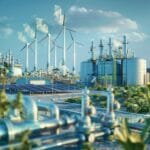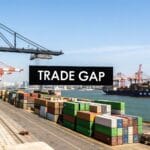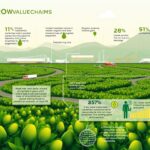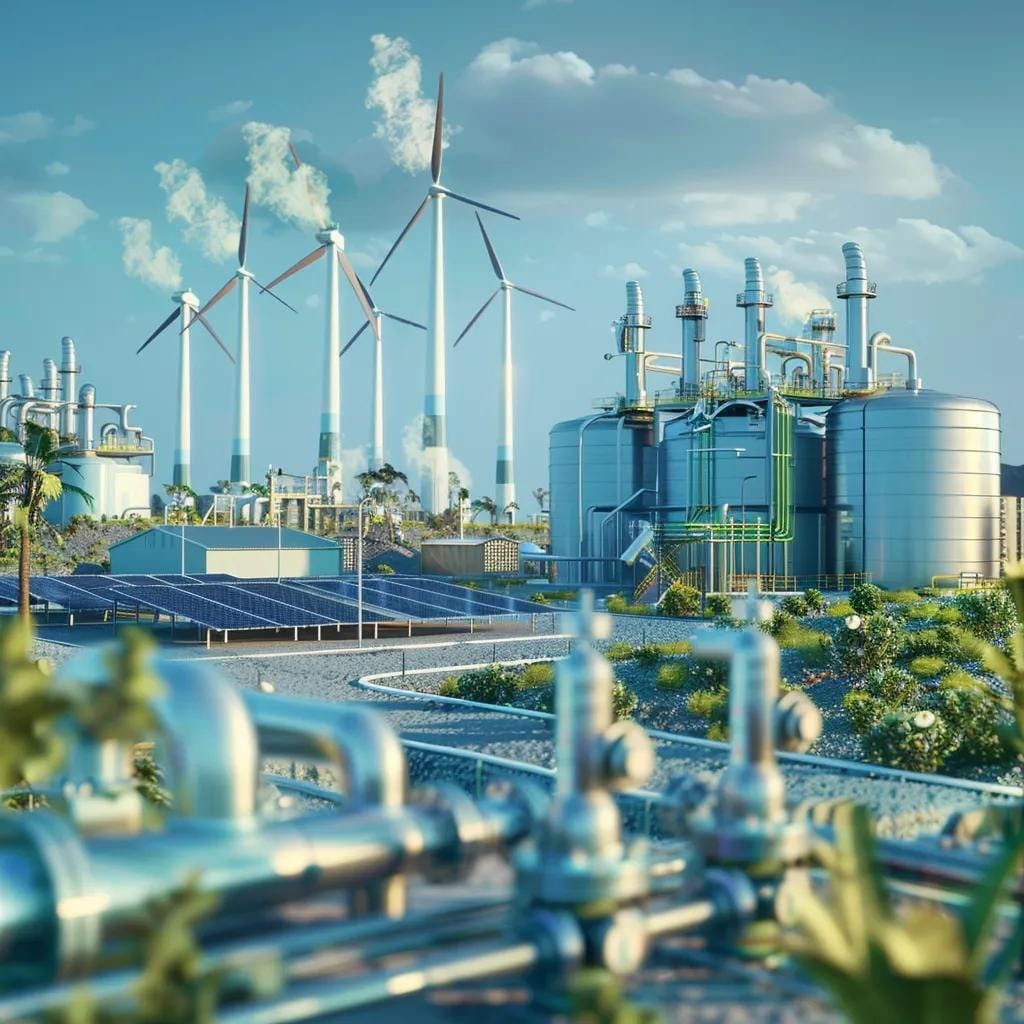Green hydrogen production costs in 2024 have become a pivotal metric for energy planners, investors, and policymakers seeking to decarbonise heavy industries. With levelized costs ranging globally from $1.50 to $6.50 per kilogram, stakeholders face the challenge of identifying the most cost-effective regions and technologies. This article dissects the key components of green hydrogen production costs, analyses regional variations, evaluates electrolyser technologies, examines strategies and policies driving down expenses, projects the future outlook, uncovers hidden value chain costs, and highlights how to visualise and compare data effectively.
By revealing how capital expenditure, renewable electricity pricing, and technology innovations shape green hydrogen economics, this guide empowers decision-makers to optimise investments and accelerate the energy transition.
What Are the Key Components of Green Hydrogen Production Cost in 2024?
Green hydrogen production cost in 2024 is driven by multiple interrelated factors that determine the levelized cost of hydrogen (LCOH). A precise cost model clarifies trade-offs between capital outlay, operational expenses, and electricity pricing, enabling accurate project valuation and competitive benchmarking.
How Is Levelized Cost of Hydrogen (LCOH) Calculated, and Why Does It Matter?
Levelized Cost of Hydrogen (LCOH) represents the net present value of total production costs over plant lifetime divided by the total hydrogen output. This metric combines CAPEX, OPEX, electrolyser efficiency, and discount rates to yield a $/kg figure. As a universal benchmark, LCOH informs investment decisions, compares regional competitiveness, and guides policy incentives to lower production cost thresholds.
Green Hydrogen Production Costs
The levelized cost of hydrogen (LCOH) is a crucial metric for evaluating the economic viability of green hydrogen projects, encompassing capital expenditure, operational expenses, and electricity pricing to determine the cost per kilogram of hydrogen produced. This benchmark is essential for investment decisions and policy incentives.
IRENA, Green Hydrogen Cost Reduction: Scaling up Electrolysers to Meet the 1.5°C Climate Goal (2020)
This research provides a framework for understanding the factors influencing LCOH, which is directly relevant to the article’s discussion of green hydrogen production costs.
What Are the Capital Expenditure (CAPEX) and Operational Expenditure (OPEX) Drivers?
CAPEX and OPEX together have the production cost of green hydrogen in 2024.
CAPEX Drivers:
- Electrolyzer purchase and installation costs
- Balance of Plant (compressors, piping, control systems)
- Site development (civil works, grid interconnection)
OPEX Drivers:
- Renewable electricity procurement
- Water supply and purification
- Maintenance, spare parts, and staffing
- Grid balancing and storage fees
Capital intensity remains high, but streamlined supply chains and modular construction are reducing upfront investments, while operational efficiencies lower ongoing expenses.
How Does Renewable Electricity Pricing Influence Production Costs?
Renewable electricity pricing accounts for up to 60% of green hydrogen cost. Lower solar PV or onshore wind LCOE directly reduces the cost per kilogram of hydrogen produced. Regions with abundant low-cost renewables, such as the Middle East and parts of Australia, achieve LCOH below $2/kg, underscoring the imperative of co-location strategies to harness site-specific power pricing advantages.
How Do Green Hydrogen Costs Compare to Grey and Blue Hydrogen in 2024?
Green hydrogen has a production cost of $3–8 per kg in 2024, compared to grey hydrogen at $1–2/kg and blue hydrogen at $1.5–3/kg.
| Hydrogen Type | Production Method | 2024 Cost Range (USD/kg) | Carbon Emissions |
|---|---|---|---|
| Grey | Steam Methane Reforming | $1.50–$3.00 | ~10 kg CO₂/kg |
| Blue | SMR + CCS | $3.00–$8.00 | 1–2 kg CO₂/kg |
| Green | Electrolysis + Renewables | $3.00 – $8.00 | <0.1 kg CO₂/kg |
Green hydrogen investments will scale down costs as electrolyser and renewable energy prices continue to fall, narrowing the gap with conventional hydrogen.
How Do Regional Variations Affect Green Hydrogen Production Costs in 2024?

Regional factors—resource availability, policy incentives, and infrastructure maturity—have increased the production cost of green hydrogen by up to 200%. Mapping these variations reveals investment hotspots and strategic export hubs.
Regional Variations in Production Costs
Regional factors, including resource availability, policy incentives, and infrastructure maturity, significantly impact green hydrogen production costs, with variations of up to 200%. The US Inflation Reduction Act (IRA) offers substantial tax credits, driving down costs in North America, while Europe and Asia-Pacific regions have their own unique cost drivers.
IEA, Global Hydrogen Review 2023 (2023)
This report provides a global overview of hydrogen production, including regional variations in costs, which directly supports the article’s analysis of these factors.
What Is the Impact of the US Inflation Reduction Act on North American Costs?
The US Inflation Reduction Act (IRA) reduces green hydrogen cost by offering up to a $3/kg tax credit under 45V. This subsidy, combined with declining wind and solar prices, drives the US average LCOH to $2.50–4.50/kg. Key hydrogen hubs in Texas, California, and the Midwest harness co-located renewables and IRA benefits to achieve competitive production economics.
How Do European Policies Shape Green Hydrogen Costs Across Germany, Spain, and the Netherlands?
Europe’s hydrogen strategy incentivises green hydrogen through auctions, carbon pricing, and grants.
- Germany leverages offshore wind to reach €3.00–4.50/kg.
- Spain’s abundant solar cuts costs to €2.50–4.00/kg.
- The Netherlands pairs wind with grid integration for €3.00–5.50/kg.
Policy harmonisation and cross-border trade corridors further optimise cost efficiencies across the EU.
What Are the Cost Drivers in Asia-Pacific: Australia, Japan, South Korea, and China?
In Asia-Pacific, resource endowments and domestic demand shape LCOH:
- Australia: solar-driven projects achieve $2.00–3.50/kg with export potential.
- Japan & South Korea: Import dependency and grid premiums yield $4.00–6.50/kg.
- China: large-scale electrolyser manufacturing drives CAPEX down, producing $3.00–5.00/kg.
Emerging domestic policies aim to close the cost gap for Northeast Asian markets.
Why Is the Middle East and North Africa (MENA) Region a Low-Cost Green Hydrogen Hub?
Middle East – offers the lowest green hydrogen production cost due to vast solar and wind resources, minimal land costs, and large-scale project financing. Saudi Arabia and UAE projects forecast LCOH of $1.50–3.00/kg, positioning MENA as a global export hub for decarbonised fuels.
How Are Latin American Countries Like Chile and Brazil Emerging in Green Hydrogen Production?
Chile and Brazil leverage high solar irradiance and hydropower to achieve $2.00–3.50/kg. Government auctions and public-private partnerships accelerate electrolyser deployment, with Chilean desert solar farms and Brazilian wind clusters driving competitive production metrics.
What Are the Global Cost Benchmarks and Averages for 2024?
The global average green hydrogen LCOH in 2024 is approximately $4.00/kg, with benchmarks ranging from $1.50/kg in MENA to $6.50/kg in import-dependent regions. These benchmarks guide capital allocation and risk assessment for new projects worldwide.
How Do Electrolyser Technologies Influence Green Hydrogen Production Costs?
Electrolyser technologies determine capital intensity, efficiency, and lifetime OPEX, significantly affecting overall cost structures.
What Are the Cost Differences Between Alkaline, PEM, and SOEC Electrolysers?
Electrolyser technology type impacts CAPEX and OPEX.
| Electrolyzer | Attribute | Value (USD/kW or $/kg H₂) |
|---|---|---|
| Alkaline | CAPEX | $400–800/kW |
| PEM | CAPEX | $800–1,200/kW |
| SOEC | CAPEX | $1,200–1,500/kW |
Electrolyzer Technology and Costs
Electrolyser technology significantly influences green hydrogen production costs, with alkaline electrolysers having lower capital expenditure (CAPEX) but lower efficiency compared to PEM and SOEC technologies. Efficiency and durability are key factors affecting overall costs, with renewable energy integration playing a crucial role in cost reduction.
NREL, Techno-economic Analysis of Electrolyzers for Hydrogen Production (2022)
This analysis supports the article’s discussion of the impact of different electrolyser technologies on the overall cost structure of green hydrogen production.
How Do Electrolyser Efficiency and Durability Affect Overall Costs?
Higher efficiency reduces electricity consumption per kilogram of hydrogen, while durable stack lifetimes lower replacement frequency. For example, a PEM stack with 70% efficiency requires fewer kWh/kg than an alkaline unit at 60%, cutting electricity-related OPEX by 15%, though balanced against higher CAPEX.
What Role Does Renewable Energy Integration Play in Cost Reduction?
Electrolysis uses renewable energy to lower LCOH through co-location with solar PV, onshore wind, or hybrid plants. Direct coupling with renewables avoids grid fees and curtails losses, reducing production cost by 10–30% compared to grid-only supply.
How Are Innovations and Economies of Scale Driving Future Electrolyser Cost Reductions?
Manufacturing scale-up and process automation are projected to halve electrolyser CAPEX by 2030. Innovations in cell design, advanced materials, and digital monitoring decrease stack degradation rates, promising further cost compression and performance gains.
What Are Balance of Plant Costs and Their Effect on Total Production Cost?
Balance of Plant (BOP) encompasses compressors, storage tanks, power electronics, and control systems. BOP contributes 20–30% of total project CAPEX. Optimising BOP design and standardising modules can reduce overall plant costs by up to 15%.
What Strategies and Policies Are Driving Down Green Hydrogen Production Costs?
A combination of fiscal incentives, financing mechanisms, supply chain improvements, R&D investments, and real-world demonstrations underpins cost reduction efforts.
How Do Government Incentives Like Tax Credits and Subsidies Reduce Costs?
Government policy incentives such as tax credits, investment grants, and renewable energy subsidies directly lower CAPEX and OPEX. For instance, the US IRA’s $3/kg tax credit and Europe’s Innovation Fund grants reduce effective LCOH by up to 40%, accelerating project bankability.
What Are the Current Investment Trends and Financing Challenges in Green Hydrogen?
Global investment in hydrogen rose from $90 billion in 2020 to $680 billion in 2024, but financing hurdles persist due to project complexity and offtake uncertainties. Blended finance structures and hydrogen banks aim to de-risk early projects and crowd in private capital.
How Can Supply Chain Optimisation Lower Production Costs?
Supply chain optimisation—streamlining procurement, modular manufacturing, and regional manufacturing hubs—reduces equipment lead times and freight costs. Bulk ordering of key components and local content requirements further trims CAPEX and strengthens regional industrial bases.
What Role Does Research and Development Play in Cost Reduction?
R&D initiatives target next-generation electrolysers, advanced catalysts, and AI-driven operations to boost efficiency and durability. Public-private partnerships fund pilot projects that validate breakthroughs, promising 20–30% cost declines over the next decade.
Which Case Studies Demonstrate Successful Cost Reduction Initiatives?
- A large-scale MENA solar-powered electrolyser project achieved LCOH of $1.80/kg through integrated design and concessional financing.
- A European consortium reduced electrolyser CAPEX by 25% via standard modular assembly and shared manufacturing lines.
- An Australian green ammonia export venture leveraged low-cost renewables to deliver hydrogen derivatives at $2.50/kg equivalent, validating export economics.
What Is the Future Outlook for Green Hydrogen Production Costs Beyond 2024?
Projections under varied scenarios outline how technology advancement, market demand, and policy support will shape cost trajectories through mid-century.
What Are the Cost Reduction Projections for 2030 and 2050 Under Different Scenarios?
| Scenario | 2030 LCOH (USD/kg) | 2050 LCOH (USD/kg) |
|---|---|---|
| Optimistic | 1.50 | 1.00 |
| Central | 2.00 | 1.50 |
| Pessimistic | 2.50 | 2.00 |
Aggressive renewable deployment and electrolyser scale-up drive the optimistic path, while slower uptake maintains higher cost baselines.
How Will Market Demand Growth Influence Production Costs?
Rising demand for green hydrogen in steelmaking, ammonia, and transport will spur capacity expansions, yielding economies of scale and learning-curve benefits that compress costs by 20–40% with each doubling of capacity.
What Challenges and Barriers Could Affect Future Cost Trends?
Policy uncertainty, offtake agreement delays, supply chain bottlenecks, and siting constraints present barriers that could stall cost declines. Addressing permitting processes and standardising technical regulations is essential to mitigate these risks.
What Opportunities Exist for New Entrants in the Green Hydrogen Market?
New entrants can capitalise on brownfield renewables sites, regional policy incentives, and technology niches such as modular electrolysers. Collaborative project models and aggregated demand frameworks lower entry thresholds and accelerate market access.
What Are the Hidden Costs Beyond Production in the Green Hydrogen Value Chain?
Production cost is only part of the total delivered price; logistics, storage, and conversion add further expenses.
How Do Delivery, Storage, and Distribution Costs Add to Total Hydrogen Price?
Transport and storage add $0.50–1.50/kg depending on mode (pipeline, trucking, shipping). Compression, liquefaction, or chemical conversion to carriers like ammonia increases costs by 10–30%, elevating the delivered cost above plant-gate LCOH.
What Is the Impact of Infrastructure and Transportation on Final Costs?
Infrastructure build-out—pipelines, terminal facilities, and bunkering—requires significant CAPEX. Remote production hubs face higher shipping fees, while integrated networks in industrial clusters reduce transport surcharges and expedite offtake.
How Does Ammonia as a Hydrogen Carrier Affect Cost Structures?
Ammonia conversion leverages existing fertiliser infrastructure but incurs synthesis and cracking costs. Ammonia as a hydrogen carrier can reduce shipping costs if cracking facilities are available at the destination, impacting end-user hydrogen prices by $0.20–0.50/kg.
How Can Green Hydrogen Production Cost Data Be Visualised and Compared Effectively?
Effective visualisation enhances stakeholder understanding and supports data-driven decision-making.
What Infographics Best Illustrate Cost Breakdown by Region and Technology?
Infographics that map regions with colour-coded LCOH bands, paired with pie charts of CAPEX vs. OPEX, help audiences grasp cost structures at a glance. Strategic callouts highlight policy incentives and resource drivers.
How Can Interactive Maps Show Regional LCOH Variations in 2024?
Interactive maps enable users to click on regions to reveal detailed statistics—electricity cost, electrolyser type, policy support—making cost comparisons intuitive and engaging for project planners.
What Comparison Charts Highlight Electrolyser Technology Costs and Regional Differences?
Side-by-side bar charts comparing alkaline, PEM, and SOEC CAPEX across regions illustrate how local manufacturing and resource pricing affect technology competitiveness, guiding procurement strategies.
How Do Flowcharts Explain the Electrolysis Process and Cost Points?
A stepwise flowchart tracing water supply → power input → electrolysis → compression/storage visually aligns cost components at each stage, clarifying where efficiency improvements yield the greatest savings.
What Role Do Video Summaries Play in Explaining Complex Cost Concepts?
Short animated videos simplify LCOH calculations, policy impacts, and technology comparisons, boosting audience retention and facilitating knowledge transfer in boardrooms and stakeholder workshops.
The cost dynamics of green hydrogen production in 2024 underscore the interplay between technology, policy, and resources. Regional benchmarks reveal where renewables drive competitive LCOH, while electrolyser innovations and strategic incentives promise ongoing cost declines. Understanding hidden value-chain expenses and leveraging effective visual tools are essential for transparent decision-making. Armed with these insights, project developers and policymakers can accelerate the global transition to clean hydrogen economies.









































































































